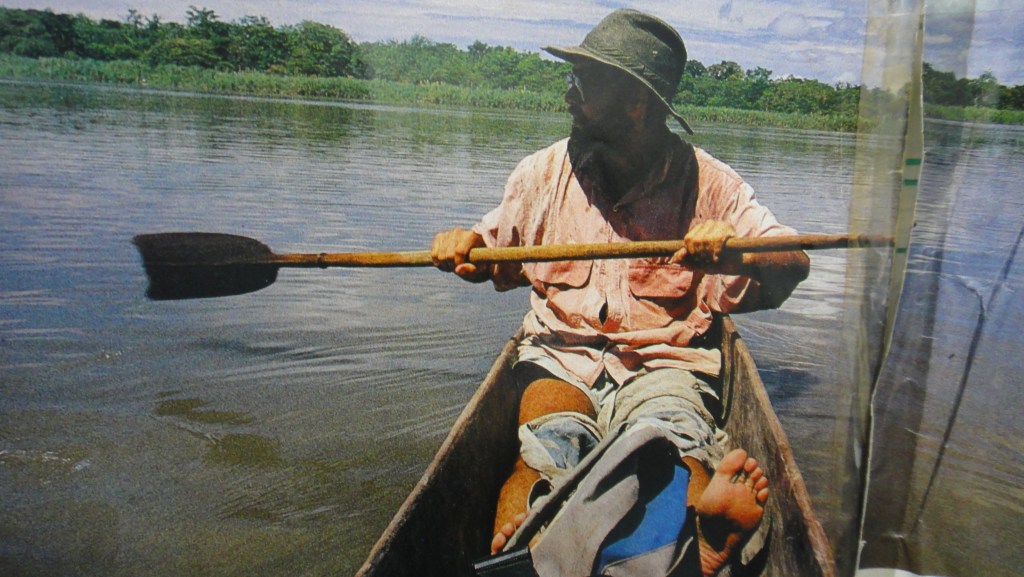
Part 3 In the story behind my book “Taiwanese Feet: My walk around Taiwan”
September 21st, 1999. In Dounan Township, Yunlin County, Taiwan, John Grant Ross (a huge, bookish, beer-guzzling Kiwi ) was starting to realize that his plan to walk the high mountains along the entire length of Taiwan – from Fuiguijiao in the north to Erluanbi in the south – was in ruins, as indeed was much of the country. There had just been a massive earthquake measuring 7.3 on the Richter scale in the early hours of the very day he had planned to set off. Reports were coming in from all over, and they didn’t sound good: Buildings had collapsed, bridges had fallen, and there were huge cracks in the earth, massive landslides, and a lot of dead bodies. It was a total mess. The “Nine-Two-One” earthquake as the Taiwanese call it, centered in Jiji township, Nantou, killed 2,415 people, injured 11,305, and caused NT$300 billion worth of damage. Ross was unharmed, but his trip was definitely off. Most of his intended mountain route was now in the emergency zone; trails had been obliterated, and in fact entire mountains had disappeared. As Big John Ross said, “My maps had suddenly become historical documents.” But not even a massive earthquake could derail the boisterous Kiwi’s enthusiasm for adventure.

John Ross, from South Auckland, is the son of immigrants: his father was from Wales and mother from Scotland. His dad was a technical expert for Air New Zealand, so son John got cheap airfares, which suited the young book-lover very well. He had done his fair share of reading about adventures; now he could get on with having some of his own. On summer vacations from university he flew off to Argentina and Chile. Sometimes he stayed in normal accommodation in the towns, but at times was drawn to camping up in the mountains by himself. “I think of myself as a bruised romantic,” He told me, “someone who might have been happier in an earlier, less civilized time.”
Indeed, he planned to go back to South America and do a trip in the Amazon rainforest to trace the steps of lieutenant-colonel Percy Fawcett, a legendary British geographer, artillery officer, cartographer, archaeologist, and explorer, who had disappeared deep in the Brazilian jungle in 1925, trying to find the lost city of “Z”. Gradually, though, Ross’ travelers’ daydreams turned to other lands. Why fly all the way around the world to go after a lost city that had probably never existed? There was another mysterious jungle to explore much closer, in Papua New Guinea.
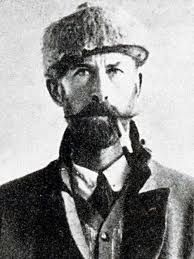
In March 1989 Ross mounted a small expedition exploring the Lake Kopiago region in Papua New Guinea’s Western Central Mountain range, not far from the Indonesian border. His goal was to hike over the spine of the mountains, through what is now called the April Salome Rainforest. The travel plan was pure 19th century: go to the end of the road and just keep walking. As Percy Fawcett himself might have asked, what could possibly go wrong?
But first he had to make sure he was properly prepared: Trade goods and presents for the natives? (Some sharpening stones and metal pots) Check! Guide and porters proficient in the local tribal languages and also New Guinea Pidgin English? Check! Two pairs of hiking boots, one pair of shoes, tent, rain gear, fire making and first aid kits, flashlight, batteries, and machete? Check! Alright then, tally ho lads!
Of course, the map is not the terrain. The lovely clear line of road on the map turned out to be “a rutted piece of shit where vehicles lurched from pothole to pothole” according to Ross. At the end of this there was a police station, and the local district officer asked him if he was sure he wanted to do it, as the last group of outsiders – some Australian officers who had entered back in 1972 – had been attacked by arrows. The answer, of course, was an emphatic yes. For Ross, that was almost like waving a red flag at a bull.
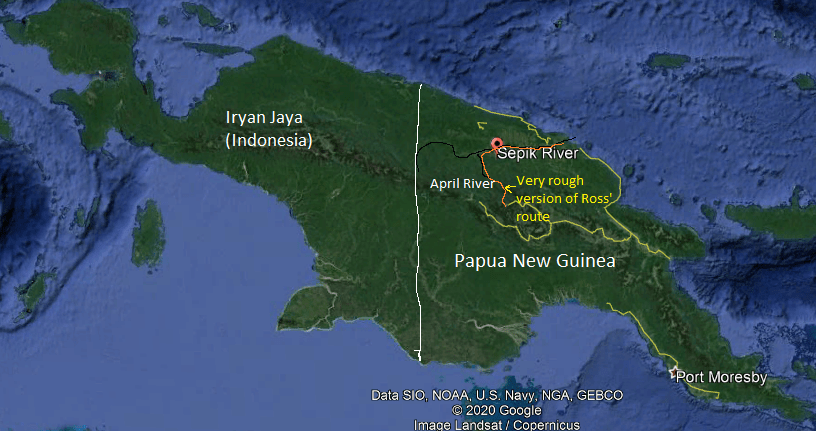
Off they went into the jungle. It was tough going: thick, moist rainforest on steep slopes, without anything you could call a decent trail. The jungle was interesting though, as were the social interactions. His guide, a man about 40 years old who had grown up on the outskirts of this area, soon discovered that everyone he had known locally before had since died. The locals wore grass skirts, lived in small simple settlements, and had a variety of reactions to the “white gorilla” in their midst. They knew of the existence of white people of course, but most of them had never seen one. Ross said that some of the reactions to him were surprisingly natural. Many people just seemed mildly amused, while a few others froze in terror. Overall, the native people there had a generally positive view of white people, associating them with good magic and medicine. Sick people would come up to him – something he had encountered in his earlier reconnaissance trip- so he had stocked up on painkillers and antibiotics. In this way the young explorer connected with what he called his “lost family,” his self-deprecating play on the “lost tribe” trope. There were no attacks, though. Of course Ross would not have wanted either himself or anyone in his party to be killed or wounded. But I can’t help but suspect that his experience would have been enhanced if just one or two badly aimed arrows had been shot at him and missed! Not to worry: the land itself would give him all the adversity he needed.
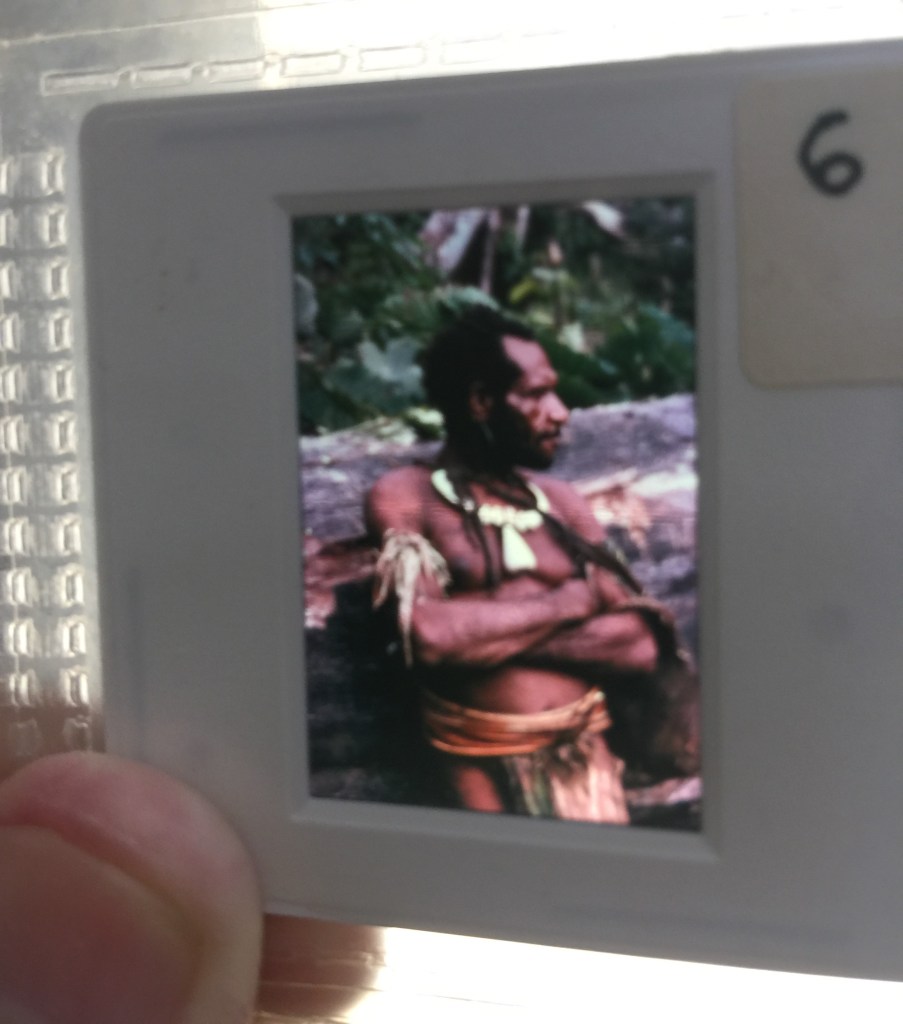
They hiked over the Central Range, but the hard work and humid conditions ate through all of his footwear. Once that went, the skin on his feet started to come off, and to make matters worse, he accidentally trod on a campfire. After this, he could no longer walk. This had all happened in just under three weeks. Hiking the jungle is no joke.
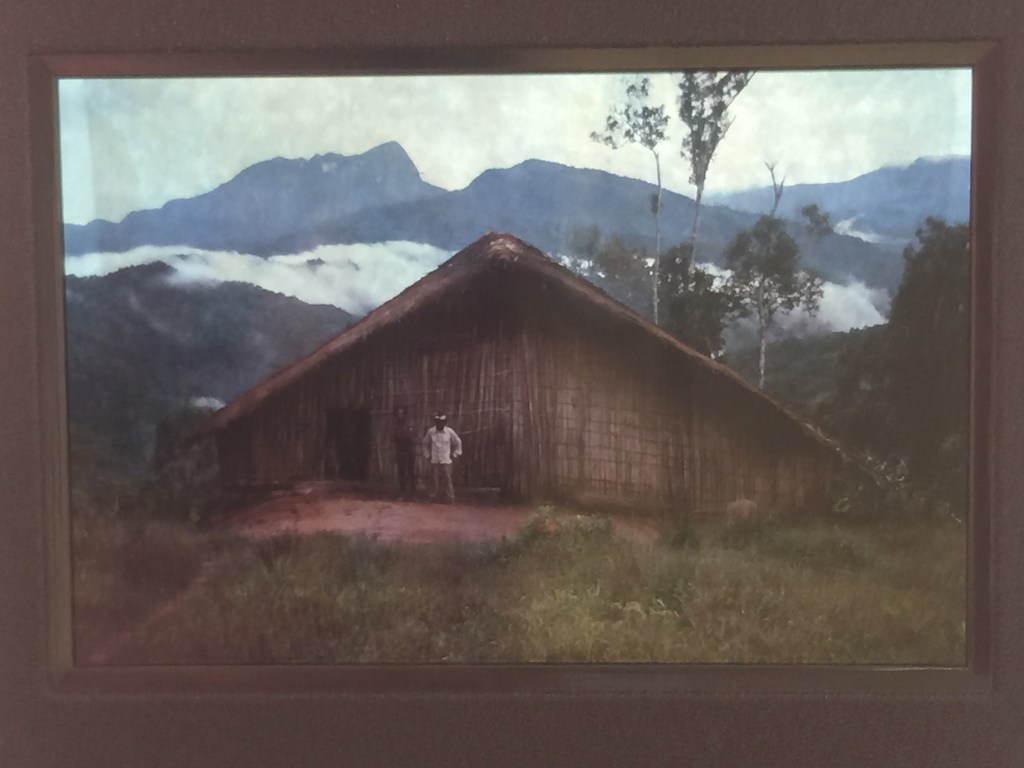
Progress along the route had been slower than expected. They had run out of food, so his companions were exhausted, while the chubbier Ross made due off of his body’s reserves. But with his injured feet, moving forward was the issue. His mates made a simple raft for Ross, and floated him down the stream to the April River, and thence the village of Niksek. He rested there for a week, getting some skin back on his feet. Then he continued by raft – alone through the wild jungle – to the next village downstream, where he bought a dugout canoe for a metal pot, a machete and a bit of cash. In his new conveyance, he paddled down to the broad Sepik River, almost 1km wide in places, and journeyed along that for a while until he found a riverside settlement with road access. From there, he got a lift to the coastal town of Wewak, where he called his parents to tell them he was OK, after being out of touch and in the wilds for six weeks.
While he was hanging out at Wewak, Ross met a Japanese photographer named Masao Endo. Endo found Ross’ adventure to be quite interesting, and wanted to go on the river with him. So they went to where Ross had left his dugout canoe, and together carried on down the Sepik River. It was beautiful country and they enjoyed days of travelling, with Ross listening to Endo’s traveler’s tales from war-reporting in Afghanistan and elsewhere.
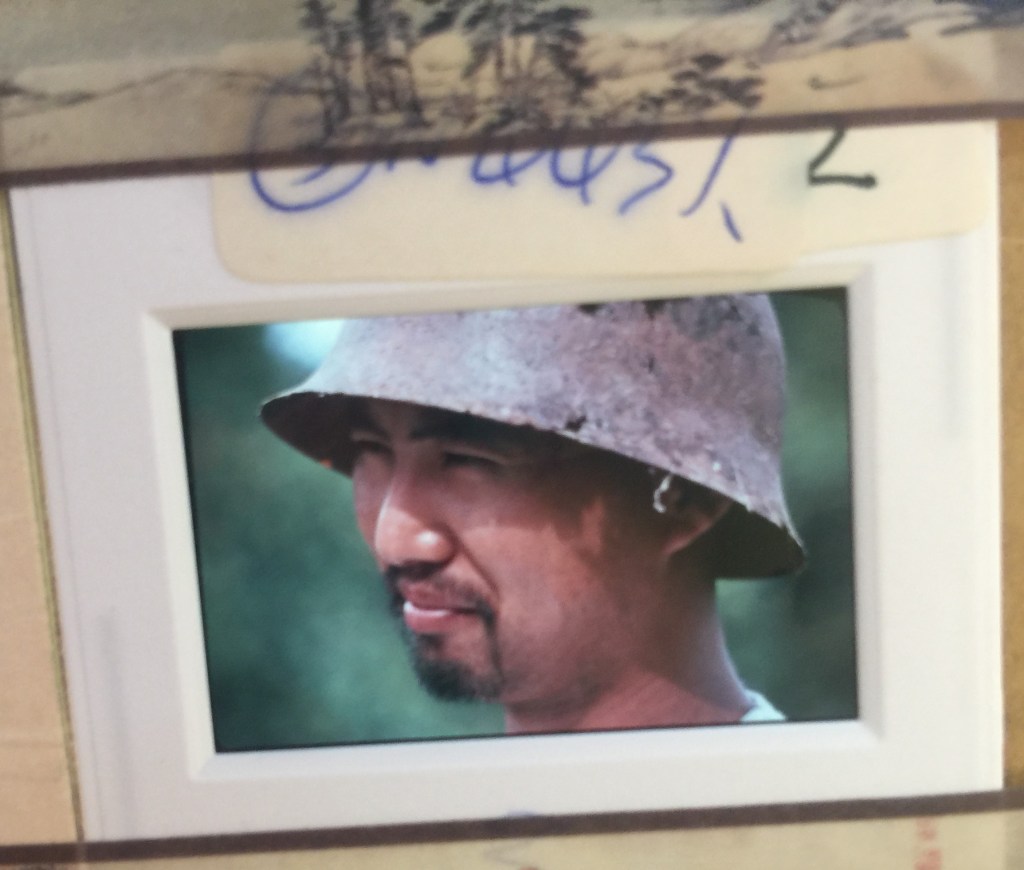
The two travelers happily chatted away as they paddled along the mighty river. Then misfortune, abetted by carelessness, struck. The dugout was in the middle of the wide river when a strong wind sprung up, kicking up high waves that soon swamped the small boat, overloaded with gear and two men. In just a few minutes, it became a matter of life or death. Endo opted for flight: he took off his shoes and pants, jumped into the river; and started to swim for shore. John Ross chose fight. He stayed in the boat and vowed to get it to shore by any means necessary. He knew it would be a huge effort, as he had lost the paddle, so he got a 1kg bag of sugar, mixed it with river water, and drank the mixture to turbo-charge him for what was to come next. Furiously he bailed the canoe out, then kneeled in the boat and paddled hard with just his arms, reaching a patch of swamp land. He caught his breath and waited to flag down a passing canoe, but nobody came. He decided to take the canoe down the river to find help, setting off paddleless, steering with his arms. After a while he noticed some thatch huts on the distant shore, and racing against the current, gave it all he had to cross the huge, turbulent river. It was a maximum physical exertion, but he made it to the village, then collapsed, exhausted – but not before he had told the villagers about Endo. A group of village men went off to look for Ross’ hapless companion, who they found in his underwear, hanging on for dear life up a small tree right on the swampy bank of the river. He had been almost eaten alive by mosquitoes. One arm had 400 bites, so there must have been thousands over his whole body, and he had to be taken to the hospital. Not sure how he felt about his decision to befriend Ross back in Wewak, though!
John Ross was chuffed with himself: He felt that he had handled the situation well, hadn’t panicked, and proven that he had “huge balls”, while wryly admitting that he had kind of fucked up by getting into trouble in the first place. But he’d survived, and the big thirsty Kiwi was up for some more fun.
Some of this involved bouncing between New Zealand, and Burma in 1991 (where he got malaria) and then Thailand 1992. One night on the Thailand trip, he met some Westerner ESL teachers who were on vacation from their life in Taiwan, who told him what a great place it was for travelers. In fact, Taiwan was just starting to be a known place on the backpackers’ trail of Asia at this time. It had recently come out of Martial Law, so travel to and around the country was much freer than before. There was a big demand for ESL teachers, so living there comfortably was not an issue; money could be made for trips in the region. Interesting, he thought. The travelers had planted a seed in his mind. One day some months later, while gold prospecting in the South Island of New Zealand, Ross sat in his tent, drinking heavily of homemade wine. It was then that the idea really took hold. I can imagine him thinking to himself, in true Kiwi fashion: “Struth! I may be out in the wop wops, pissed as a chook, but moving to Taiwan would be a cracker of an idea! I’ll do it! Sweet as!”
So in 1994, at the tender age of 26, he moved to Taiwan. Of course, like so many of us, he enjoyed the novel food, temples, culture, lovely “silken skinned” women, friendly vibe etc. Although tamer than his usual haunts, Taiwan was more of an adventure back then than it is today. It had been mapped out for the traveler, but not in detail, and there was no Google Maps or anything like it. There were a lot of unknowns and new things to discover. The society itself was also a bit wilder back, with a more cavalier approach to “rules” and “laws”, and loads more traditional spectacles happening in public, like noisy parades, exploding firecrackers, temple strippers, god pigs, betel nut beauties, and more.
And the drinking! The drinking! It was heaven. There were restaurants where you could drink, some pubs, or cheaper yet, Ross could settle his massive frame onto a park bench where and swill cans of beer all day at a very modest price. Police? No problem. It was legally and socially acceptable.
Flash forward a couple of years. Ross had started to grok that there was something more to Taiwan, something deeper and more mysterious than the convenience and easy pickings of life for the English teacher/traveler. One day he was in Mongolia, chasing down some local Yeti legend, getting stymied by Soviet-era bureaucrats telling him he lacked the necessary internal travel visa, and sullenly drinking vodka in a crappy bar in a one-yak town. Suddenly an inspired idea floated into his head. He decided to walk from north to south down the mountainous spine of the country, and then write a book about it. It was going to be his Next Epic Adventure! In love with his new plan, he got organized, did his research, and made his preparations. He would set out on September 21st, 1999. Yes, that would be an excellent date, with the weather cooling down a tad and the end of typhoon season almost here. What could possibly go wrong?
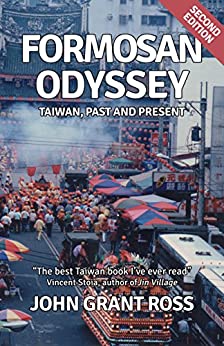
When Buddha closes the door, he opens a window. Although the 921 earthquake put the kibosh on his mountain trekking plans, he did do a tour of the island, in which met some very interesting people, and came out with his first book “Formosan Odyssey”, in 2002. The reader of travel books had become a creator of one. (Much more about this worthy book in my following post.) Despite this fine achievement, which led to more books and the eventual establishment of Camphor Press, Ross still had a bit of lingering regret at not having done that big mountain spine walk as planned. Now, married, it was no longer an option.
However, one day he spotted a thread on Forumosa.com (Taiwan’s premier expat BBS back in the Before Facebook Era) by some guy called “Big John” who planned to walk around the coastline of the entire island. Yep, that was me. So online he wished me the best and invited me to drop by for a visit when I had stomped my way around the coast to near his digs Chiayi. Six years later, I did. It turned out to be several visits actually. And on one of them, after a genuinely improbable number of beers, the other Big John suggested to me that I write a book about my adventures. It hadn’t occurred to me before that moment. But I instantly agreed, in true Canuck fashion: “Beauty! I may be out here in the boonies with you bud, so hammered after that mickey and that 2-4 that I can barely hold on to the chesterfield. But writing a book about my walk is a totally excellent idea. I’ll give’er for sure, eh!”
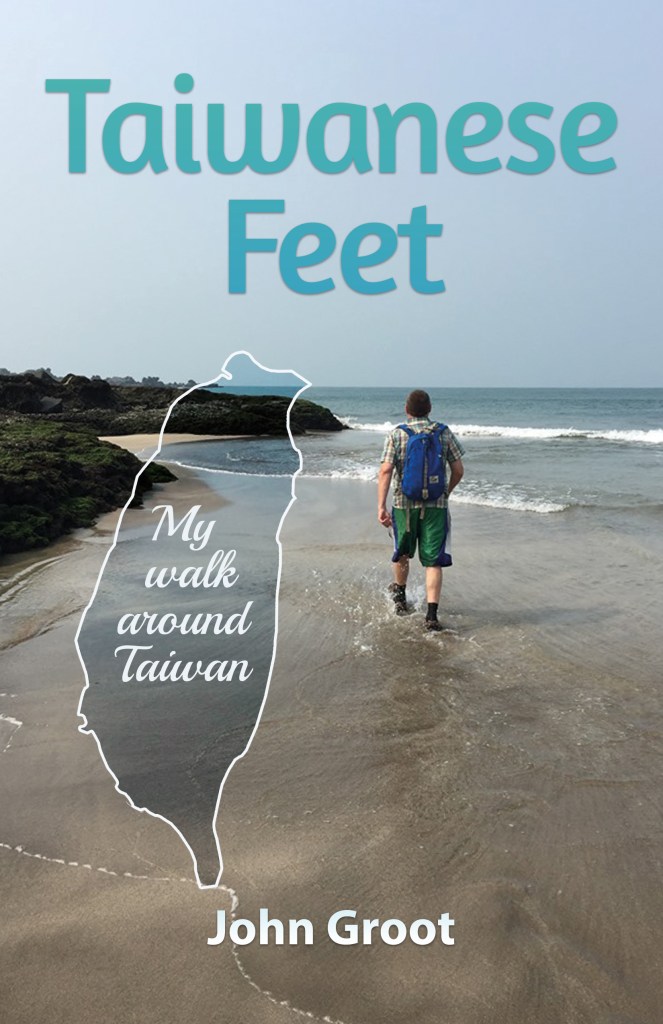
For more information about the book, click here:
https://www.facebook.com/Taiwanese.Feet
Stay tuned for the 4th and last installment in this series on the story behind the book, coming SOON!

Nice! I hope to read more in the future.
LikeLiked by 1 person